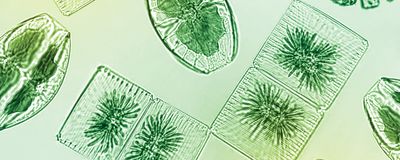algae

Collaborative Research Aims to Discover Effective Treatments for Marine Mammals Poisoned by Toxic Algae
Zymo Research | Oct 30, 2024 | 3 min read
Zymo Research, Unravel Biosciences, and Channel Islands Marine & Wildlife Institute team up to combat increasing cases of domoic acid poisoning in sea lions.
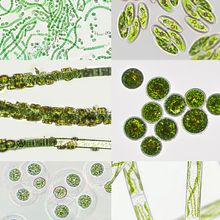
Algae: The Next Green Revolution
Hannah Thomasy, PhD | Sep 13, 2024 | 3 min read
Researchers explore algal biology for new strategies to help humans live more sustainably.
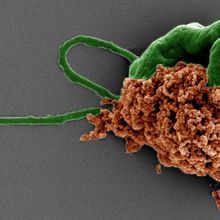
Green Warriors: Algae Microrobots Set to Combat Metastasis
Laura Tran, PhD | Aug 26, 2024 | 4 min read
Green algae can be outfitted with nanoparticles, transforming them into efficient drug-delivering machines that target lung tumors.
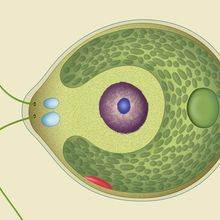
Drugs Hitch a Ride on Algae for Targeted Delivery
Holly Barker, PhD | Feb 1, 2023 | 3 min read
A new microrobot uses algae to transport antibiotics into the lungs of mice with pneumonia.
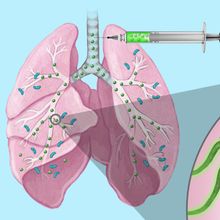
Infographic: Algae Robots Transport Antibiotics to Infected Tissues
Holly Barker, PhD | Feb 1, 2023 | 1 min read
Microscopic algae dotted with drug-filled nanoparticles may offer a more effective means of treatment than traditional delivery methods.

Monir Moniruzzaman Studies the Secrets of Giant Viruses
James M. Gaines | Jan 2, 2023 | 4 min read
The University of Miami researcher studies how a mysterious group of supersized viruses infects and influences the evolution of their hosts.
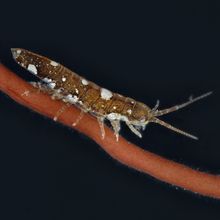
Seaweed Has Its Own Matchmakers: Small Crustaceans
Alejandra Manjarrez, PhD | Jul 28, 2022 | 3 min read
A species that transports the spermatia of red algae is the first known instance of an animal facilitating fertilization in this ancient photosynthetic lineage.
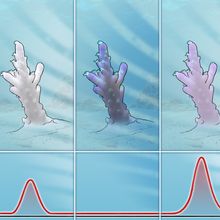
Infographic: How Corals Remember the Past, Prepare for the Future
Amanda Heidt | Feb 14, 2022 | 1 min read
Scientists have documented examples of corals “remembering” prior exposure to heat stress in the field, and are now simulating these phenomena in the lab to better understand their cellular and molecular underpinnings.
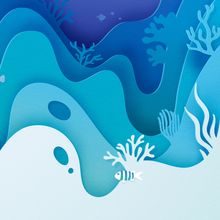
Environmental Memory: How Corals Are Adjusting to Warmer Waters
Amanda Heidt | Feb 14, 2022 | 10+ min read
Corals that previously experienced heat stress respond better the next time around. Researchers are trying to figure out how, and hope to one day take advantage of the phenomenon to improve coral restoration efforts.
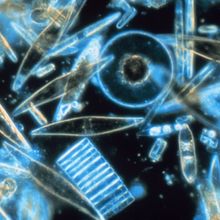
Q&A: Fluorescence Lets Diatoms Communicate, Coordinate Behavior
Dan Robitzski | Dec 16, 2021 | 6 min read
The Scientist spoke with physicist and microbial ecologist Idan Tuval, whose recent paper challenges the assumption that these single-celled organisms only communicate via chemical signals.
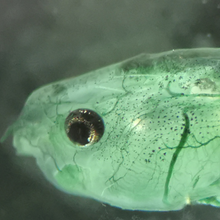
Scientists Use Photosynthesis to Power an Animal’s Brain
Abby Olena, PhD | Oct 13, 2021 | 3 min read
Injecting oxygen-generating algae into tadpoles allows brain activity to continue in the absence of oxygen, researchers find.
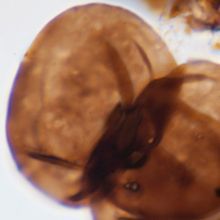
Discovered: Fossilized Spores Suggestive of Early Land Plants
Ruth Williams | Aug 12, 2021 | 3 min read
Spores found in 480 million-year-old rock bring the fossil record in line with molecular estimates of when plants first adapted to life on land.
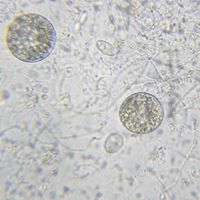
Researcher Sanctioned by PNAS for Not Sharing Alga
Catherine Offord | Jun 9, 2021 | 1 min read
Zhangfeng Hu will be unable to submit manuscripts for three years after having violated the journal’s policy about making study materials available to other scientists.
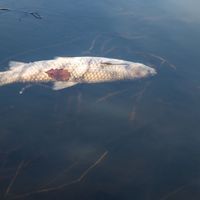
Oxygen Levels Dropping in US and European Lakes: Study
Lisa Winter | Jun 7, 2021 | 2 min read
Researchers find a widespread decline in dissolved oxygen levels in lakes, which is known to reshape ecosystems.
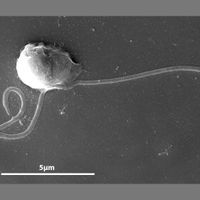
Picozoans Are Algae After All: Study
Christie Wilcox, PhD | May 6, 2021 | 5 min read
Phylogenomics data place the enigmatic plankton in the middle of the algal family tree, despite their apparent lack of plastids—an organelle characteristic of all other algae.
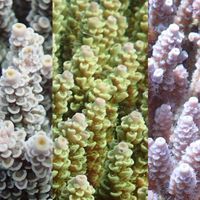
Certain Color Varieties of a Coral Are More Protected from Bleaching
Lisa Winter | Feb 25, 2021 | 2 min read
In yellow-green and purple versions of the reef-building Acropora tenuis, the genes that code for particular fluorescent and other colorful proteins become more active in the summer, protecting symbiotic algae from thermal stress and resisting bleaching.
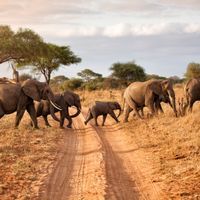
Mass Elephant Die-Off Caused by Cyanobacteria, Officials Say
Max Kozlov | Sep 23, 2020 | 2 min read
Tests point to a toxic algal bloom that might have led to the unprecedented deaths of hundreds of African elephants in Botswana earlier this year, but the evidence isn’t conclusive.
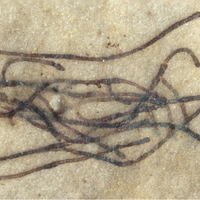
Oldest Green Algae Fossil Discovered in China
Kerry Grens | Feb 25, 2020 | 2 min read
The 1-billion-year-old impressions have features similar to modern algae and indicate that photosynthesizing plants evolved at least that long ago.
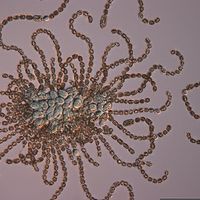
Blue-Green Algae Produce Methane
Ruth Williams | Jan 15, 2020 | 3 min read
Biological production of this greenhouse gas, once thought to be the reserve of anaerobic microbes, occurs in these widespread, photosynthesizing cyanobacteria.
